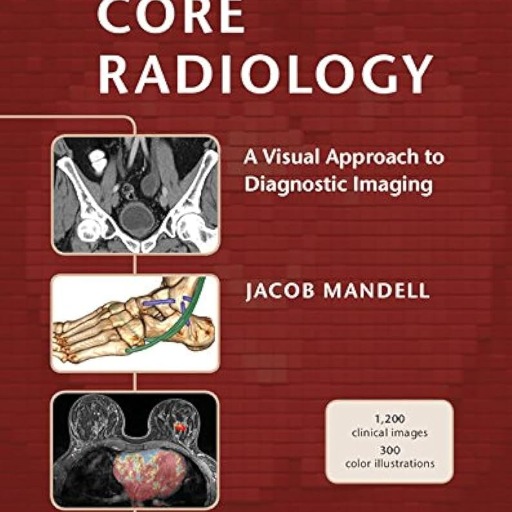Radiotherapy-AI-powered radiotherapy insights.
AI-Driven Radiotherapy Solutions.
Suggest a treatment plan for...
What are the dose constraints for...
Advise on radiation therapy for...
Discuss dose optimization for...
Related Tools
Load More
XrayGPT - Your Assistant Radiologist
Hey, its your virtual assistant in the digital world of radiology! I'm XrayGPT, an assistant radiologist, ready to dissect medical cases with you and giving you some medical insights. Let's navigate the maze of X-rays, diagnostics, and medical images toge

CBT GPT
A virtual CBT guide for thought and behavior management.

XRay Diagnostic Assistant
Analyzes X-ray images and provides diagnostic reports

Taquígrafo RX
Experto en corrección de terminología radiológica y redacción de informes

Psychotherapy Simulator
I'm a role-play assistant for budding therapists.

RadiologyGPT
Virtual radiologist, based on radiology textbooks. As accurate as it gets. 🩻
20.0 / 5 (200 votes)
Introduction to Radiotherapy
Radiotherapy, also known as radiation therapy, is a medical treatment that involves the use of ionizing radiation to target and destroy cancer cells. Its primary goal is to eliminate malignant cells while sparing as much healthy tissue as possible. Radiotherapy can be used as a standalone treatment or in combination with other modalities such as surgery, chemotherapy, and immunotherapy. The design purpose of radiotherapy is rooted in precision: targeting tumors with high accuracy to maximize therapeutic effects while minimizing side effects. The use of advanced imaging techniques, such as CT, MRI, and PET scans, is integral to planning and delivering radiotherapy. A typical scenario is a patient with localized prostate cancer where radiotherapy is chosen as the treatment modality. The patient's anatomy is scanned, and a treatment plan is created using specialized software to calculate the optimal radiation dose distribution that confines the high dose to the tumor and reduces exposure to nearby organs like the bladder and rectum.

Main Functions of Radiotherapy
Tumor Targeting and Treatment Planning
Example
In head and neck cancer, radiotherapy planning involves creating a 3D model of the tumor and surrounding structures using CT and MRI scans. The oncologist can then design a radiation plan that maximizes the dose to the tumor while minimizing damage to nearby critical structures like the spinal cord and salivary glands.
Scenario
A patient with laryngeal cancer undergoes radiotherapy planning where a precise dose is calculated to target the tumor while protecting the nearby vocal cords.
Adaptive Radiotherapy
Example
In cases of lung cancer, adaptive radiotherapy allows for adjustments to the treatment plan if the tumor shrinks or changes position during the course of treatment. This ensures that the radiation continues to be directed precisely at the tumor.
Scenario
A patient with non-small cell lung cancer experiences tumor shrinkage during treatment. The treatment plan is re-optimized to focus the radiation on the smaller tumor, sparing more healthy lung tissue.
Stereotactic Radiosurgery (SRS) and Stereotactic Body Radiotherapy (SBRT)
Example
SRS and SBRT are used for delivering high doses of radiation with sub-millimeter precision. For example, SRS can be employed in treating brain metastases where a single high dose is delivered to the lesion with minimal impact on surrounding brain tissue.
Scenario
A patient with a small brain metastasis undergoes SRS where a high dose of radiation is delivered in one session, effectively targeting the tumor while minimizing cognitive side effects.
Ideal Users of Radiotherapy Services
Oncologists and Radiation Therapists
These healthcare professionals are directly involved in the planning and delivery of radiotherapy. They utilize the technology to create personalized treatment plans for cancer patients, ensuring that each treatment is optimized for efficacy and safety. Their expertise in interpreting imaging, understanding tumor biology, and applying radiation physics is essential for the successful execution of radiotherapy.
Medical Physicists and Dosimetrists
Medical physicists and dosimetrists play a critical role in the technical aspects of radiotherapy. They are responsible for the accurate calculation of radiation doses, machine calibration, and quality assurance processes. Their work ensures that the radiation dose delivered to the patient matches the treatment plan, minimizing the risk of complications and enhancing treatment outcomes.

Guidelines for Using Radiotherapy
Visit aichatonline.org
Access the platform for a free trial without needing to log in or subscribe to ChatGPT Plus.
Identify Your Use Case
Determine whether you need assistance with medical documentation, patient care simulations, treatment planning, or research support to tailor the tool’s functionality to your needs.
Input Your Data or Query
Provide specific details or questions related to radiotherapy, such as treatment planning or dosimetry calculations, to receive accurate, context-specific information.
Review and Refine Responses
Carefully evaluate the AI’s output, ensuring it aligns with clinical guidelines or research requirements, and make adjustments as necessary.
Integrate into Clinical Workflow
Use the generated insights or data in your clinical documentation, treatment planning, or research, ensuring to cross-check with standard practices for optimal results.
Try other advanced and practical GPTs
Blockchain Dev Companion
AI-powered blockchain development made easy.

Crypto Co-Pilot
AI-Powered Cryptocurrency Insights

Design Innovator
AI-powered design for innovation.

Web Dev Guru
AI-Powered Web Development Expertise

ALBERTO / BETÃO
AI-Powered Legal Solutions for Professionals
☯️ Smart Talk: Personality Type Strategies
Enhance Communication with AI Insights
System Prompt Generator
AI-powered prompts for CustomGPTs

Novel Marketing Navigator
Boost your book's visibility with AI-driven marketing.

Excel analysis - Reports
Unlock Insights with AI-Powered Excel Analysis.

Clay
AI-powered contact management made simple.

AI Movie Maker
Transform Your Movie Ideas with AI

Surreal Art Creator
AI-powered Surreal Art Generation

- Research Support
- Treatment Planning
- Clinical Workflow
- Patient Simulation
- Dosimetry Analysis
Radiotherapy Q&A
How can Radiotherapy assist in treatment planning?
Radiotherapy can provide detailed support for treatment planning by offering insights on dosimetry calculations, anatomical considerations, and the optimal radiation delivery methods, ensuring alignment with clinical protocols.
Can Radiotherapy aid in research?
Yes, Radiotherapy can assist in academic and clinical research by providing literature summaries, generating hypotheses, and analyzing data trends within the context of radiotherapy and oncology.
Is Radiotherapy suitable for patient care simulations?
Absolutely. Radiotherapy can simulate patient care scenarios, helping medical professionals practice decision-making, refine treatment strategies, and improve patient outcomes without real-world risks.
What are the prerequisites for using Radiotherapy?
Basic knowledge of radiotherapy concepts and familiarity with clinical workflows are recommended to maximize the tool’s effectiveness. No special software is required, just access to the aichatonline.org platform.
How does Radiotherapy ensure accuracy?
Radiotherapy uses advanced AI algorithms trained on extensive medical datasets and peer-reviewed literature, providing precise and context-aware responses. However, it’s essential to validate the outputs against established clinical guidelines.